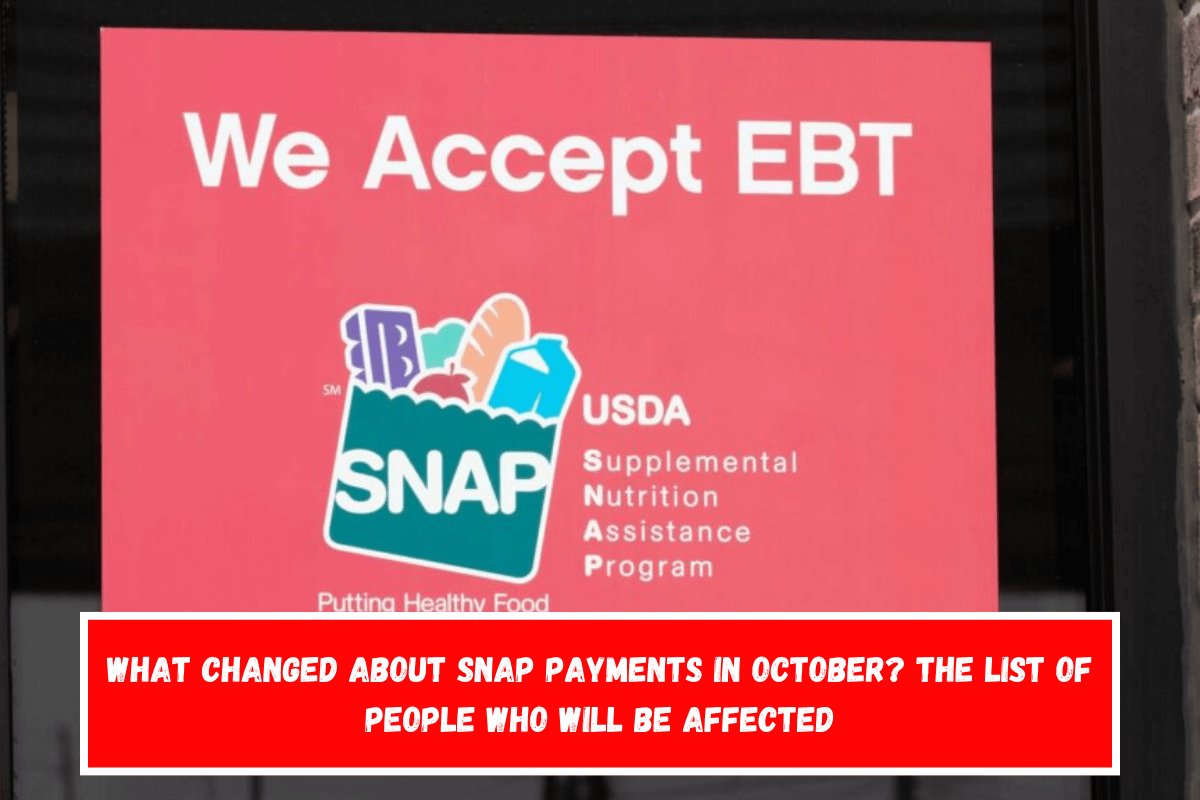People who get SNAP funds to buy healthy food every month will be happy to hear some news in October. With the help of the Supplemental Nutrition Assistance Program, low-income Americans can get healthy foods every month.
As of October 1, the start of the fiscal year, which means that each year, different amounts of SNAP benefits, taxes, and income levels are eligible change. For this fiscal year, the maximum amounts given have been raised. However, recipients are still needed to check the specific requirements for their area and household size.
SNAP benefits will change for some recipients in October
According to Alex Beene, a lecturer in financial literacy at the University of Tennessee at Martin, the income level needed to get SNAP benefits is lower this year. Also, Newsweek reported that recipients should get a little more each month because of increases tied to inflation.
He also said that while this is good news for the receivers, the real increase in money will probably not be noticeable on a yearly basis. Also, remember that most allotments will only grow by a small amount every month.
It ranges from $291 to $292 per month for a home with one person living in it. Still, if you have a family of four, your allowance will go up from $973 to $975. This year, if you live in a home with eight people, you could get up to $1,756 (up from $1,751). Here is a full list of the SNAP payment limits for all 48 states and Washington, D.C.:
- Household Size 1: $292 (2023-2024 Amount: $291)
- Household Size 2: $536 (2023-2024 Amount: $535)
- Household Size 3: $768 (2023-2024 Amount: $766)
- Household Size 4: $975 (2023-2024 Amount: $973)
- Household Size 5: $1,158 (2023-2024 Amount: $1,155)
- Household Size 6: $1,390 (2023-2024 Amount: $1,386)
- Household Size 7: $1,536 (2023-2024 Amount: $1,532)
- Household Size 8: $1,756 (2023-2024 Amount: $1,751)

Which states will receive the largest SNAP benefits this month?
The most that Hawaii, Alaska, the Virgin Islands, and Guam can get from SNAP will be higher because food costs there are higher on average. Beene also said that people who get these funds will have to decide how to best use them, especially since the prices of the things that SNAP benefits cover have gone up.
As inflation starts to fall, cost-of-living changes are likely to have less of an effect on benefits in the future. People who get benefits should plan for this.
The exact amount of income you can get will rely on your state, but the new changes are meant to take inflation and the state of the economy into account better. Kevin Thompson, founder and CEO of 9i Capital Group and a financial expert, says that the rise in job standards for able-bodied adults without dependents (ABAWDs) will also be very important.
He said that the cost-of-living increase for SNAP will be the biggest change because food prices have gone up. ABAWDs between the ages of 52 and 54 must show proof that they are working, in training, or going to school in order to get benefits. Kids younger than 30 used to have to work at least 80 hours a month, go to school, or do training in order to get SNAP payments for more than three months.
In an interview with Newsweek, Thompson said that the goal of making ABAWDs do more work is to meet the rising need for physically fit workers. He also said that the benefit raises, even though they may not seem like much, are a result of the ongoing inflationary pressures that are making food prices go up.
I think that the changes to ABAWD standards will have a bigger effect on people’s ability to work, but I don’t think that the benefit raises will be very big for most families.
Also, people who are homeless, veterans, or 18–24-year-olds who have aged out of foster care do not have to meet the work standards. Also, people who are handicapped, pregnant, or have a child at home will not have to meet the same requirements.
Also See:- Increased required minimum distributions (RMD) announced Officially: Retirees will be affected















Leave a Reply